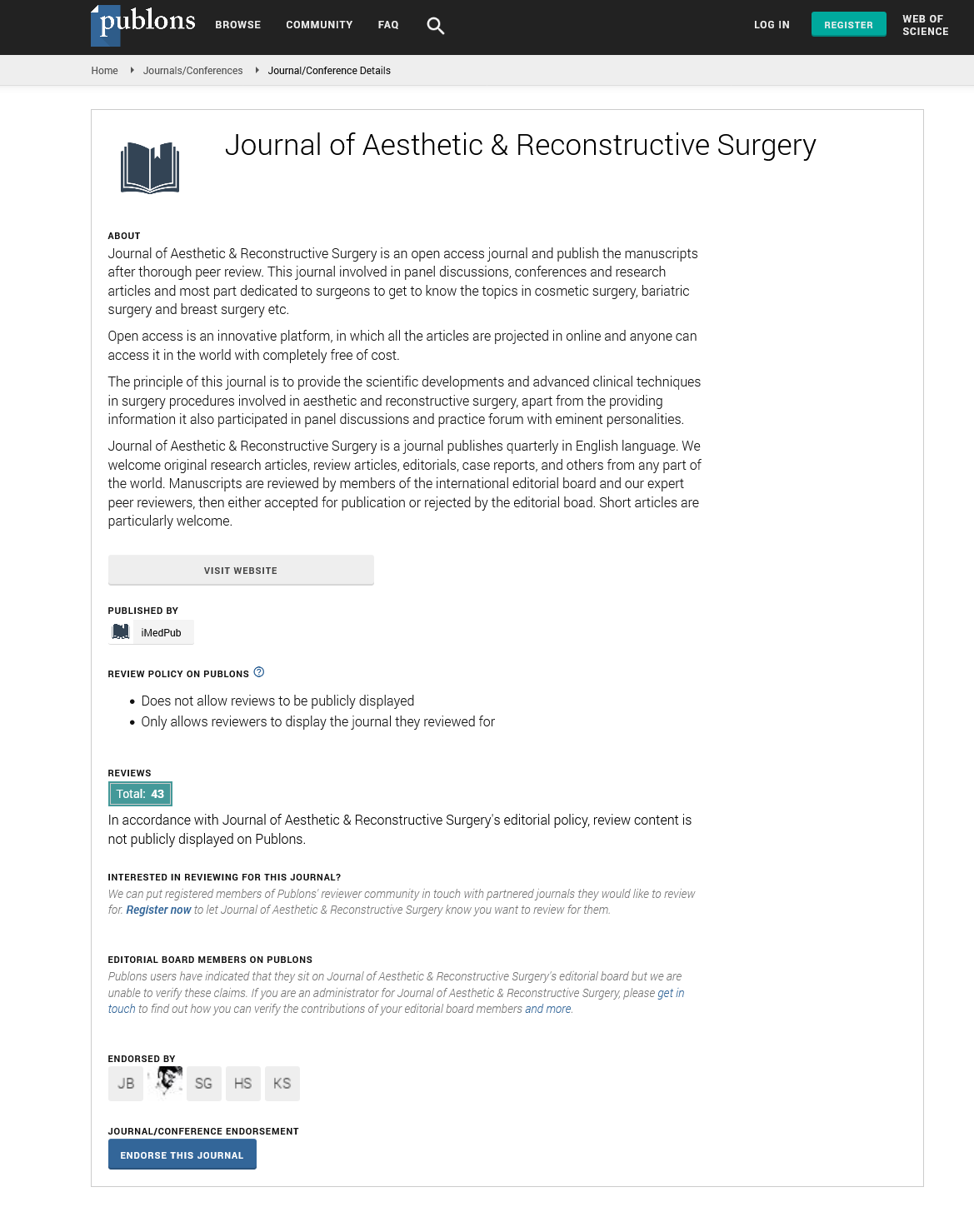Abstract
Complications Following Plastic Surgery in Solid Organ Transplant Recipients: A Descriptive Cohort Study
Background: In 2012, over 28,000 organ transplants were performed in the United States. Long-term survival of solid organ transplant recipients (SOTRs) has increased dramatically due to advancements in surgical technology and immunosuppressive therapies. As a result, the number of SOTRs seeking plastic and reconstructive surgery is increasing. However, the safety of plastic and reconstructive surgical procedures in SOTRs, a concerning clinical population for postoperative complications due to immunosuppression, is not well characterized.
Objective: Estimate prevalence of complications following plastic and reconstructive surgery in SOTRs.
Design: Descriptive cohort study. Patients: All SOTRs who underwent surgical procedures performed by the Section of Plastic and Reconstructive Surgery faculty at Yale-New Haven Hospital between 2004 and 2011. Measurements: Transplant history (organ, reason for transplant, immunotherapy regimens) and plastic surgery history (procedure, results, and complications) were recorded.
Results: 92 plastic surgical procedures were performed on 65 SOTRs in between 2004-2011, including hand, reconstructive and cosmetic cases. 57 procedures were urgent or emergent, while 35 procedures were elective (of which 23 procedures (66%) were cosmetic). The overall complication prevalence was 23.9%, most commonly related to wound healing complications (14.1%), bleeding (2.2%) and postoperative pain (2.2%). There was one death in the series (1.1%). Lower complication prevalence was observed in elective (6%) and cosmetic (4%) procedures.
Conclusions: The overall complication prevalence for plastic surgery in SOTRs was 23.9%, with complication prevalence of 6% in elective cases. Given this prevalence, this report suggests that a history of transplantation is not an absolute contraindication to plastic and reconstructive surgery despite medical immunosuppression. In particular, elective procedures in suitable patients can have successful outcomes with minimal wound healing complications.
Author(s):
Elizabeth Zellner, Rachel Lentz, Carolyn Chuang and Derek Steinbacher
Abstract | Full-Text | PDF
Share this

Google scholar citation report
Citations : 130
Journal of Aesthetic & Reconstructive Surgery received 130 citations as per google scholar report
Journal of Aesthetic & Reconstructive Surgery peer review process verified at publons
Abstracted/Indexed in
- Google Scholar
- China National Knowledge Infrastructure (CNKI)
- Directory of Research Journal Indexing (DRJI)
- WorldCat
- Publons
- Geneva Foundation for Medical Education and Research
- Secret Search Engine Labs
- Euro Pub
Open Access Journals
- Aquaculture & Veterinary Science
- Chemistry & Chemical Sciences
- Clinical Sciences
- Engineering
- General Science
- Genetics & Molecular Biology
- Health Care & Nursing
- Immunology & Microbiology
- Materials Science
- Mathematics & Physics
- Medical Sciences
- Neurology & Psychiatry
- Oncology & Cancer Science
- Pharmaceutical Sciences


